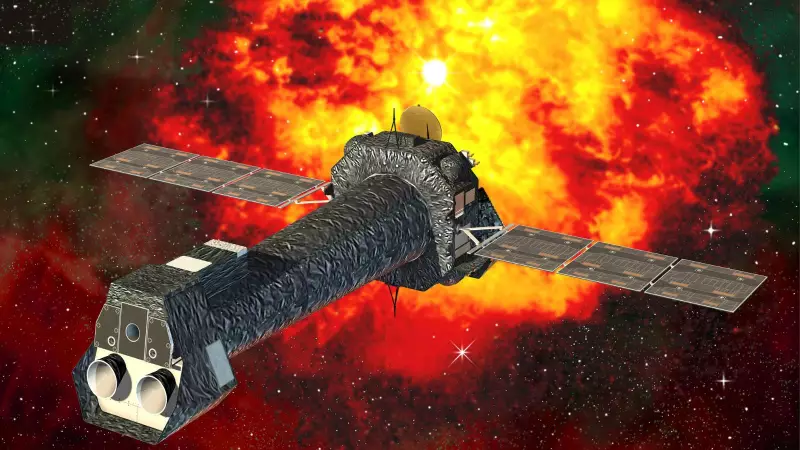
In a discovery that reshapes our understanding of alien worlds, astronomers have detected a monstrous eruption from a distant star so powerful it could rip the atmosphere right off any nearby Earth-like planets. This marks the first confirmed detection of a coronal mass ejection, or CME, from a star beyond our Sun.
A Stellar Monster Awakens
The groundbreaking finding, published in the journal Nature on November 12, 2025, centres on a star known as StKM 1-1262. This star is an M dwarf, a type that is typically smaller but far more violently active than our own Sun. The star is located an immense 40 light-years away from Earth.
The investigation revealed that the coronal mass ejection associated with this star travels at a mind-boggling speed of nearly 2,400 kilometres per second. This velocity is so extreme that it places it within the top 5% of the most powerful solar events. The sheer force and density of this stellar storm would be sufficient to strip away the protective atmosphere of any planets orbiting too close.
The Habitability Paradox of M Dwarf Stars
This discovery throws a potential wrench into the search for extraterrestrial life. M dwarf stars are prime targets in this search because their small size means planets orbit very close to them. This proximity makes such planets easier to detect. Furthermore, the region where conditions might be just right for liquid water to exist—the so-called "Goldilocks zone"—is also located very near these stars.
However, this same proximity becomes a curse. Planets residing in this habitable zone would be subjected to the full fury of frequent and intense CMEs and solar flares. Joe Callingham, a lead researcher at the Netherlands Institute for Radio Astronomy, emphasizes that while these planets may be in the right spot for water, the relentless stellar activity poses a major threat to their atmospheres and any potential for life.
How the Discovery Was Made and What Comes Next
The initial detection was made using the highly sensitive Low Frequency Array (LOFAR) radio telescope, a European network primarily based in the Netherlands. Researchers identified a specific type of radio signal known as a type II radio burst. This burst is caused by the shock wave of a CME as it blasts away from a star, and this is the first conclusive detection of such a burst from a star outside our solar system.
Follow-up observations with the European Space Agency's XMM-Newton space telescope confirmed the source as an M dwarf star that rotates 20 times faster than our Sun and is exceptionally bright in X-rays.
The team notes that they are pushing the limits of what LOFAR can resolve, which is why the astronomy community is eagerly awaiting the Square Kilometre Array (SKA). This ambitious next-generation radio telescope project, scheduled to begin operations in Australia and South Africa in the 2030s, is expected to revolutionize this field. Callingham is optimistic that the SKA could detect "tens to hundreds" of extrasolar CMEs in its very first year, greatly advancing our understanding of stellar weather and its impact on planetary habitability.
Ultimately, this research provides a crucial new tool for astronomers in the long-term quest to find a truly habitable, Earth-like exoplanet, a search that Callingham acknowledges may still take many more years.





